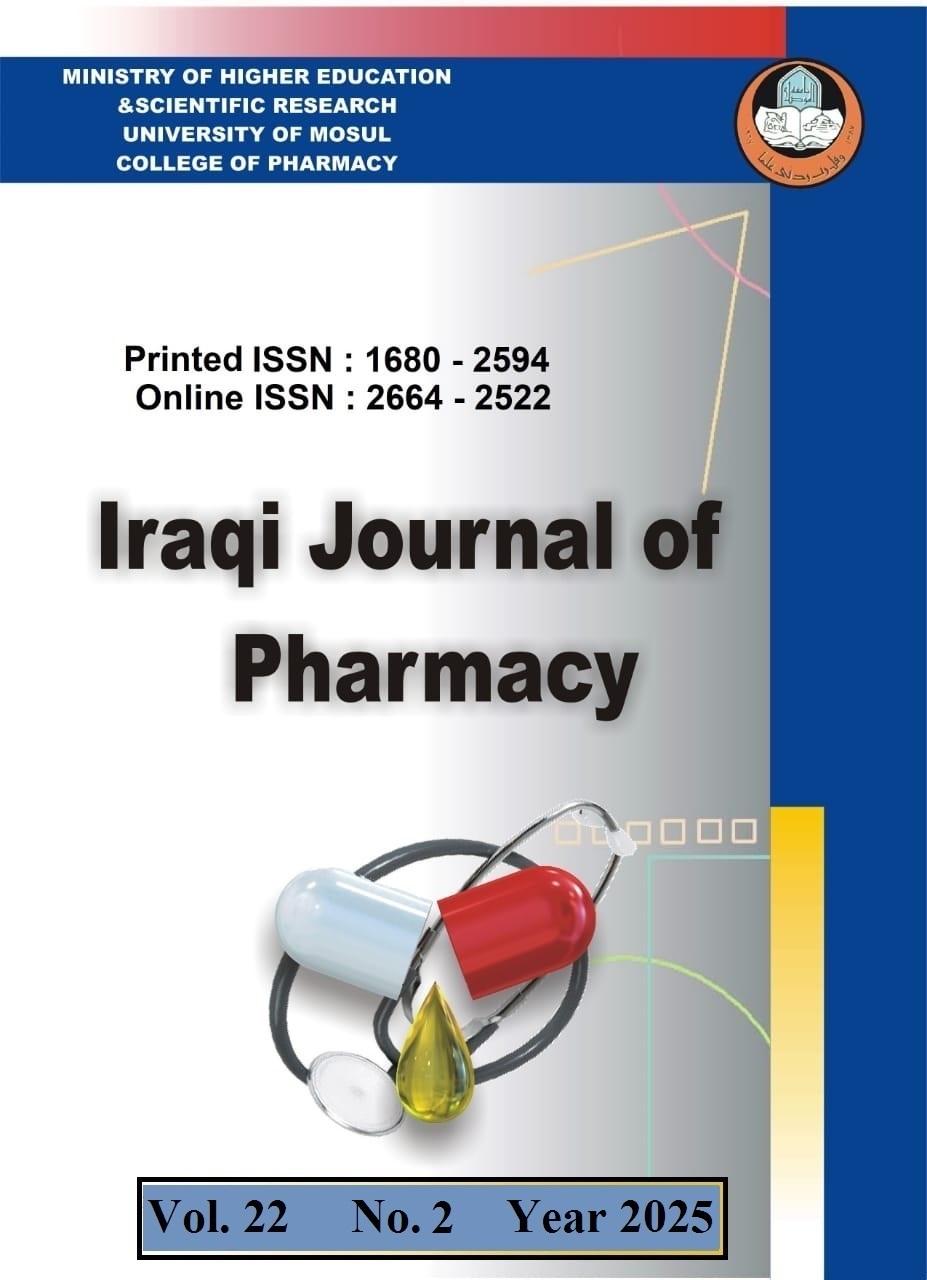Vitamin D Levels Aptly Sustained Insulin Resistance Markers
Abstract
Background: Insulin resistance is the underlying etiology for a variety of metabolic diseases including metabolic syndrome, type 2 diabetes, and obesity, alongside with their complication. The insulin resistance mechanism is complex and yet obscure. Vitamin D is a fundamental parameter involved in various ailments. We aimed to identify the link between vitamin D levels and glycemic/lipid parameters using patients with different metabolic diseases as a model. Methods: Serum samples were collected from patients with diabetes (n=20), metabolic syndrome (n=20), and obesity (n=15) versus the control group (n=18) with matched age, sex, and health status. Vitamin D and insulin were quantified by colorimetric technique and the total cholesterol (TC), triglyceride (TG), high density-lipoprotein (HDL) were measured in the studied groups using standard kits. Low density-lipoprotein (LDL), very low-density lipoprotein, and Homeostatic Model Assessment for Insulin Resistance (HOMA-IR) were calculated using standard formula. Results: The study found that insulin and vitamin D levels were significantly lower in diabetic [18.72.2, 16.54.4], metabolic syndrome [23.61.6, 18.63.4], and obese patients [151.9, 14.14.8] compared to the control group [9.84, 255.1]. Serum TC levels were higher in metabolic syndrome and obese subjects compared to control and diabetic subjects, TG levels were significantly higher in metabolic syndrome compared to the other groups, HDL levels were reduced in diabetic, metabolic syndrome, and obese groups compared to the control group, LDL levels were elevated in metabolic syndrome and obese groups compared to diabetic and control groups, VLDL levels were significantly higher in metabolic syndrome than in other groups. Conclusion: Vitamin D reduced in metabolic diseases reciprocally aligned with insulin level and associated with variation in lipid parameters.
References
- Afzal S, Bojesen SE, Nordestgaard BG. Low 25-Hydroxyvitamin D and Risk of Type 2 Diabetes: A Prospective Cohort Study and Metaanalysis. Clinical Chemistry. 2013;59(2):38191.
- Alqahtani MS. Prevention of Adverse Outcomes among Adult Patients with Diabetes Comorbid with Dyslipidemia - A Narrative Review of the Existing Literature. The Review of Diabetic Studies. 2024;20(1):1-5.
- AlQuaiz AM, Kazi A, Youssef RM, Alshehri N, Alduraywish SA. Association between standardized vitamin 25(OH)D and dyslipidemia: a community-based study in Riyadh, Saudi Arabia. Environmental Health and Preventive Medicine. 2020;25(1):4.
- Alvarez JA, Ashraf A. Role of Vitamin D in Insulin Secretion and Insulin Sensitivity for Glucose Homeostasis. International Journal of Endocrinology. 2010;2010:118.
- Benabedlfedil Y, Moumen A, Zraidi M, Derrou S, Guendouz FE. Lipid Profile in Type 2 Moroccan Diabetic: Fasting Vs Non-fasting. The Review of Diabetic Studies. 2023;19(2):114-120.
- Blumberg JM, Tzameli I, Astapova I, Lam FS, Flier JS, Hollenberg AN. Complex Role of the Vitamin D Receptor and Its Ligand in Adipogenesis in 3T3-L1 Cells. Journal of Biological Chemistry. 2006;281(16):1120513.
- Bolou A. Gestational diabetes and the risk of type 2 diabetes in postnatal period. Review of Clinical Pharmacology and Pharmacokinetics International Edition. 2024;38(1):3945.
- Bourlon P, Billaudel B, Faure-Dussert A. Influence of vitamin D3 deficiency and 1,25 dihydroxyvitamin D3 on de novo insulin biosynthesis in the islets of the rat endocrine pancreas. Journal of Endocrinology. 1999;160(1):8795.
- Capiati D, Benassati S, Boland RL. 1,25(OH) 2 vitamin D 3 induces translocation of the vitamin D receptor (VDR) to the plasma membrane in skeletal muscle cells. Journal of Cellular Biochemistry. 2002;86(1):12835.
- Chiu KC, Chu A, Go VLW, Saad MF. Hypovitaminosis D is associated with insulin resistance and cell dysfunction. The American Journal of Clinical Nutrition. 2004;79(5):8205.
- Cho NH, Shaw JE, Karuranga S, Huang Y, Da Rocha Fernandes JD, Ohlrogge AW, et al. IDF Diabetes Atlas: Global estimates of diabetes prevalence for 2017 and projections for 2045. Diabetes Research and Clinical Practice. 2018;138:27181.
- Cignachi NP, Ribeiro A, Machado GDB, Cignachi AP, Kist LW, Bogo MR, et al. Bone regeneration in a mouse model of type 1 diabetes: Influence of sex, vitamin D3, and insulin. Life Sciences. 2020;263:118593.
- Dibaba DT. Effect of vitamin D supplementation on serum lipid profiles: a systematic review and meta-analysis. Nutrition Reviews. 2019;77(12):890902.
- Elmi C, Fan MM, Le M, Cheng G, Khalighi K. Association of serum 25-Hydroxy Vitamin D level with lipid, lipoprotein, and apolipoprotein level. Journal of Community Hospital Internal Medicine Perspectives. 2021;11(6):8126.
- Faka A, Ntafla LM, Chalkias C, Panagiotakos DB. Geographical variation in diabetes mellitus prevalence rates in Greece. The Review of Diabetic Studies. 2023;19(2): 6270.
- Gagnon C, Lu ZX, Magliano DJ, Dunstan DW, Shaw JE, Zimmet PZ, et al. Low Serum 25-Hydroxyvitamin D Is Associated with Increased Risk of the Development of the Metabolic Syndrome at Five Years: Results from a National, Population-Based Prospective Study (The Australian Diabetes, Obesity and Lifestyle Study: AusDiab). The Journal of Clinical Endocrinology and Metabolism. 2012;97(6):195361.
- Gelfand JM, Cree BAC, McElroy J, Oksenberg J, Green R, Mowry EM, et al. Vitamin D in African Americans with multiple sclerosis. Neurology. 2011;76(21):182430.
- Greenhill C. Contribution of B cells to obesity and insulin resistance. Nature Reviews Endocrinology. 2013;9(6):315315.
- Guilherme A, Virbasius JV, Puri V, Czech MP. Adipocyte dysfunctions linking obesity to insulin resistance and type 2 diabetes. Nature Reviews Molecular Cell Biology. 2008;9(5):36777.
- Gulseth HL, Wium C, Angel K, Eriksen EF, Birkeland KI. Effects of Vitamin D Supplementation on Insulin Sensitivity and Insulin Secretion in Subjects With Type 2 Diabetes and Vitamin D Deficiency: A Randomized Controlled Trial. Diabetes Care. 2017;40(7):8728.
- Guzey M, Jukic D, Arlotti J, Acquafondata M, Dhir R, Getzenberg RH. Increased apoptosis of periprostatic adipose tissue in VDR null mice. Journal of Cellular Biochemistry. 2004;93(1):13341.
- Han YY, Hsu SHJ, Su TC. Association between Vitamin D Deficiency and High Serum Levels of Small Dense LDL in Middle-Aged Adults. Biomedicines. 2021;9(5):464.
- Hariri Z, Kord-Varkaneh H, Alyahya N, Prabahar K, Gman MA, Abu-Zaid A. Higher Dietary Vitamin D Intake Influences the Lipid Profile and hs-CRP Concentrations: Cross-Sectional Assessment Based on The National Health and Nutrition Examination Survey. Life. 2023;13(2):581.
- Harris SS, Dawson-Hughes B. Reduced sun exposure does not explain the inverse association of 25-hydroxyvitamin D with percent body fat in older adults. Journal of Clinical Endocrinology and Metabolism. 2007;92(8):31557.
- Holt R, Petersen JH, Dinsdale E, Knop FK, Juul A, Jrgensen N, et al. Vitamin D Supplementation Improves Fasting Insulin Levels and HDL Cholesterol in Infertile Men. The Journal of Clinical Endocrinology and Metabolism. 2022;107(1):98108.
- Hoseini R, Damirchi A, Babaei P. Vitamin D increases PPAR expression and promotes beneficial effects of physical activity in metabolic syndrome. Nutrition. 2017;36:549.
- Jeenduang N, Sangkaew B. The association between serum 25-hydroxyvitamin D concentrations and serum lipids in the Southern Thai population. Archives of Medical Science. 2022;18(1):11.
- Jorde R, Figenschau Y. Supplementation with cholecalciferol does not improve glycaemic control in diabetic subjects with normal serum 25-hydroxyvitamin D levels. European Journal of Nutrition. 2009;48(6):34954.
- Ju SY, Jeong HS, Kim DH. Blood Vitamin D Status and Metabolic Syndrome in the General Adult Population: A Dose-Response Meta-Analysis. The Journal of Clinical Endocrinology and Metabolism. 2014;99(3):105363.
- Kamen DL, Cooper GS, Bouali H, Shaftman SR, Hollis BW, Gilkeson GS. Vitamin D deficiency in systemic lupus erythematosus. Autoimmunity Reviews. 2006;5(2):1147.
- Kamycheva E, Jorde R, Figenschau Y, Haug E. Insulin sensitivity in subjects with secondary hyperparathyroidism and the effect of a low serum 25-hydroxyvitamin D level on insulin sensitivity. Journal of Endocrinological Investigation. 2007;30(2):12632.
- Karatas S, Hekimsoy Z, Dinc G, Onur E, Ozmen B. Vitamin D levels in overweight/obese adults with and without metabolic syndrome. Journal of Endocrinology and Metabolism. 2013;3(3):47-56.
- Kayaniyil S, Harris SB, Retnakaran R, Vieth R, Knight JA, Gerstein HC, et al. Prospective association of 25( OH ) D with metabolic syndrome. Clinical Endocrinology. 2014;80(4):5027.
- Koprivica M, Kaikovi-Lei S. Causes, consequences, and treatment of vitamin D deficiency in humans. Medicinski asopis. 2023;57(3):11924.
- Kull M, Kallikorm R, Lember M. Body mass index determines sunbathing habits: implications on vitamin D levels. Internal Medicine Journal. 2009;39(4):2568.
- Lagunova Z, Porojnicu AC, Lindberg F, Hexeberg S, Moan J. The dependency of vitamin D status on body mass index, gender, age and season. Anticancer Research. 2009;29(9):371320.
- Lanham-New S, Lee P, Wong M, Sui C, Starkey S, Lovell D, et al. Association between dietary vitamin D intake and serum lipid profiles in Asian and Caucasian UK women: preliminary results from the Vitamin D, Food Intake, Nutrition and Exposure to Sunlight in Southern England (D-FINES) Study. Proceedings of the Nutrition Society. 2008;67(OCE8):E320.
- Lemieux P, Weisnagel SJ, Caron AZ, Julien AS, Morisset AS, Carreau AM, et al. Effects of 6-month vitamin D supplementation on insulin sensitivity and secretion: a randomised, placebo-controlled trial. European Journal of Endocrinology. 2019;181(3):28799.
- Manco M, Calvani M, Nanni G, Greco AV, Iaconelli A, Gasbarrini G, et al. Low 25-hydroxyvitamin D does not affect insulin sensitivity in obesity after bariatric surgery. Obesity Research. 2005;13(10):1692700.
- Matsuda S, Kitagishi Y. Peroxisome Proliferator-Activated Receptor and Vitamin D Receptor Signaling Pathways in Cancer Cells. Cancers. 2013;5(4):126170.
- Mattila C, Knekt P, Mnnist S, Rissanen H, Laaksonen MA, Montonen J, et al. Serum 25-hydroxyvitamin D concentration and subsequent risk of type 2 diabetes. Diabetes Care. 2007;30(10):256970.
- Morr M, Vil L, Franckhauser S, Mallol C, Elias G, Ferr T, et al. Vitamin D Receptor Overexpression in -Cells Ameliorates Diabetes in Mice. Diabetes. 2020;69(5):92739.
- Muoio DM, Newgard CB. Molecular and metabolic mechanisms of insulin resistance and -cell failure in type 2 diabetes. Nature Reviews Molecular Cell Biology. 2008;9(3):193205.
- Muscogiuri G, Sorice GP, Prioletta A, Policola C, Della Casa S, Pontecorvi A, et al. 25-Hydroxyvitamin D concentration correlates with insulin-sensitivity and BMI in obesity. Obesity (Silver Spring). 2010;18(10):190610.
- Neelankal John A, Jiang FX. An overview of type 2 diabetes and importance of vitamin D3-vitamin D receptor interaction in pancreatic -cells. Journal of Diabetes and its Complications. 2018;32(4):42943.
- Parikh SJ, Edelman M, Uwaifo GI, Freedman RJ, Semega-Janneh M, Reynolds J, et al. The Relationship between Obesity and Serum 1,25-Dihydroxy Vitamin D Concentrations in Healthy Adults. The Journal of Clinical Endocrinology and Metabolism. 2004;89(3):11969.
- Parker J, Hashmi O, Dutton D, Mavrodaris A, Stranges S, Kandala NB, et al. Levels of vitamin D and cardiometabolic disorders: Systematic review and meta-analysis. Maturitas. 2010;65(3):22536.
- Patel P, Poretsky L, Liao E. Lack of effect of subtherapeutic vitamin D treatment on glycemic and lipid parameters in Type 2 diabetes: A pilot prospective randomized trial. Journal of Diabetes. 2010;2(1):3640.
- Pittas AG, Harris SS, Stark PC, Dawson-Hughes B. The effects of calcium and vitamin D supplementation on blood glucose and markers of inflammation in nondiabetic adults. Diabetes Care. 2007;30(4):9806.
- Pramyothin P, Biancuzzo RM, Lu Z, Hess DT, Apovian CM, Holick MF. Vitamin D in adipose tissue and serum 25-hydroxyvitamin D after roux-en-Y gastric bypass. Obesity (Silver Spring). 2011;19(11):222834.
- Ritterhouse LL, Crowe SR, Niewold TB, Kamen DL, Macwana SR, Roberts VC, et al. Vitamin D deficiency is associated with an increased autoimmune response in healthy individuals and in patients with systemic lupus erythematosus. Annals of the Rheumatic Diseases. 2011;70(9):156974.
- Salehpour S, Hosseini S, Nazari L, Hosseini M, Saharkhiz N. The effect of vitamin D supplementation on insulin resistance among women with polycystic ovary syndrome. JBRA assisted reproduction. 2019;23(3):235.
- Sato M, Hiragun A. Demonstration of 1,25dihydroxyvitamin D 3 receptorlike molecule in ST 13 and 3T3 L1 preadipocytes and its inhibitory effects on preadipocyte differentiation. Journal Cellular Physiology. 1988;135(3):54550.
- Sivanandy P, Lin WW, Chinnappan S, Wasi NAA, Pereira CS, Yee YH, et al. Effectiveness of educational intervention in improving the knowledge, attitudes, perceptions, and practices of diabetes patients towards diabetes in Selangor, Malaysia. The Review of Diabetic Studies. 2023;19(3):171-185.
- Song HR, Park CH. Low serum vitamin D level is associated with high risk of metabolic syndrome in post-menopausal women. Journal of Endocrinological Investigation. 2013;36(10):7916.
- Song Y, Wang L, Pittas AG, Del Gobbo LC, Zhang C, Manson JE, et al. Blood 25-Hydroxy Vitamin D Levels and Incident Type 2 Diabetes. Diabetes Care. 2013;36(5):14228.
- Sugden JA, Davies JI, Witham MD, Morris AD, Struthers AD. Vitamin D improves endothelial function in patients with Type 2 diabetes mellitus and low vitamin D levels. Diabetic Medicine. 2008;25(3):3205.
- Trapali M. Diabetes management in healthy ageing. A mini review. A mini review. Review of Clinical Pharmacology and Pharmacokinetics International Edition. 2024;38(1):117.
- Vargas-Uricoechea H, Frias JP, Vargas-Sierra HD. Fixed-ratio Combinations (basal Insulin Plus GLP-1RA) In Type 2 Diabetes. an Analytical Review Of Pivotal Clinical Trials. The Review of Diabetic Studies. 2023;19(1):1427.
- Vaskonen T, Mervaala E, Sumuvuori V, Seppnen-Laakso T, Karppanen H. Effects of calcium and plant sterols on serum lipids in obese Zucker rats on a low-fat diet. British Journal of Nutrition. 2002;87(3):23945.
- Vimaleswaran KS, Berry DJ, Lu C, Tikkanen E, Pilz S, Hiraki LT, et al. Causal relationship between obesity and vitamin D status: bi-directional Mendelian randomization analysis of multiple cohorts. PLOS Medicine. 2013;10(2):e1001383.
- Vogt S, Baumert J, Peters A, Thorand B, Scragg R. Effect of waist circumference on the association between serum 25-hydroxyvitamin D and serum lipids: results from the National Health and Nutrition Examination Survey 20012006. Public Health Nutrition. 2017;20(10):1797806.
- von Hurst PR, Stonehouse W, Coad J. Vitamin D supplementation reduces insulin resistance in South Asian women living in New Zealand who are insulin resistant and vitamin D deficient - a randomised, placebo-controlled trial. British Journal of 2010;103(4):54955.
- Wang Y, Si S, Liu J, Wang Z, Jia H, Feng K, et al. The Associations of Serum Lipids with Vitamin D Status. Portero-Otin M, editor. PLoS ONE. 2016;11(10):e0165157.
- Zajec A, Trebuak Podkrajek K, Tesovnik T, ket R, ugalj Kern B, Jenko Bizjan B, et al. Pathogenesis of Type 1 Diabetes: Established Facts and New Insights. Genes. 2022;13(4):706:1-19.
- Zeitz U, Weber K, Soegiarto DW, Wolf E, Balling R, Erben RG. Impaired insulin secretory capacity in mice lacking a functional vitamin D receptor. FASEB Journal. 2003;17(3):114.








